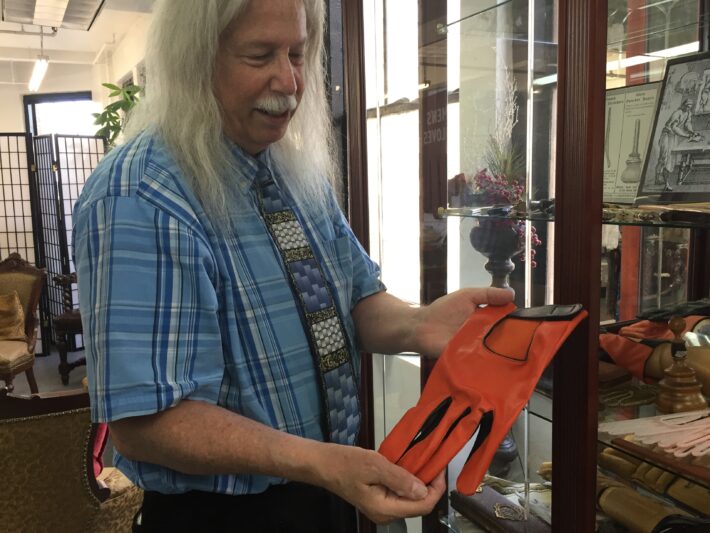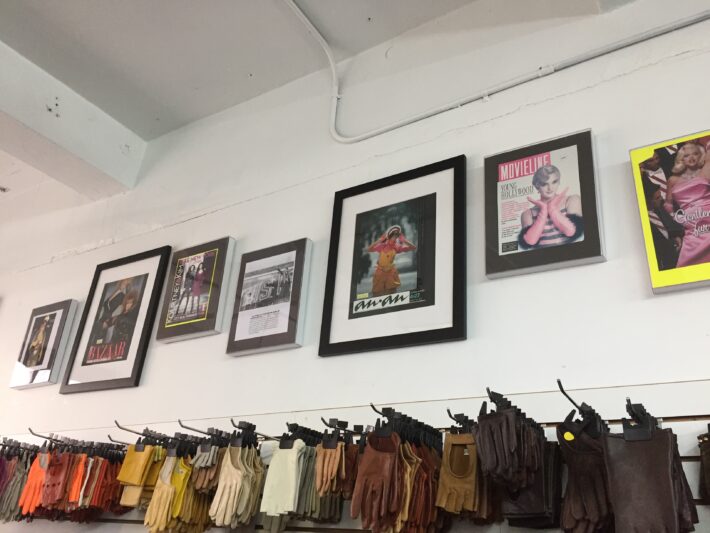
As the fate of the Garment District inches towards resolution, many can only look on anxiously.
On September 13, the final proposal by the Garment District Steering Committee—a group that includes manufacturers, fashion designers, and business developers—was presented to Community Board 4. It is the latest attempt at consensus between those who want to lift protective zoning regulations that preserve manufacturing, and those who feel that garment manufacturing should be here to stay.
The proposal consists of a “phasing in” method that requires 500,000 to 750,000 square feet of space be dedicated to garment manufacturing before any of the protective restrictions could be lifted. It suggests that the city offer tax incentives to property owners who provide stable leases for manufacturers, and that buildings are purchased as long-term homes for manufacturers, with a combination of public and private funds.
At the meeting, the Garment District Alliance (GDA)—a member of the Garment District Steering Committee—argued that the proposal did not fully represent their opinion. Jerry Scupp of GDA reiterated the organization’s point of view: zoning restrictions have been inadequate in face of global forces that lead to outsourcing of manufacturing to China and Vietnam. Attempting to preserve manufacturing this way is “unrealistic,” because it is already failing to do the job.
GDA’s dissent frustrated many in attendance, who felt that GDA was mischaracterizing the three-month process that went into creating the proposal.
“We were having serious civic discussions, they were agreeing in those meetings,” said Joe Restuccia, a member of both Community Board 4 and the Garment District Steering Committee. “Now, it’s like they want to re-litigate all over again the whole idea of why we have manufacturing at all in New York.”
The Special Garment District zoning restrictions were put in place in 1987 to protect manufacturing, requiring that for every foot converted to non-manufacturing uses, there would be one foot of manufacturing preserved. Restuccia said that over the past 30 years, much of the space had been illegally converted to non-manufacturing uses due to lack of city enforcement.
The debate between developers and preservationists has been going on since 2009. What was crucial this time around, Restuccia said, was that all members of the Steering Committee went into the three-month discussion in agreement on two things: the 1987 zoning provisions would be lifted, but that some manufacturing would be preserved in the district. The discussion was supposed to be about how to subsidize preservation, not whether the garment manufacturing should exist.
There is no indication of when the proposal will be reviewed by EDC and City Planning. The review was previously scheduled for August 21. “They haven’t returned our call,” said Jefferson Mao, of the Manhattan borough office

Delays will have consequences, says Steven Epstein, a costume designer representing Theatrical Wardrobe Local 754. Epstein says that almost all the owners they talk to have concerns about where business will be in five years. Few owners have leases longer than one year; most operate on month-to-month-leases. “A big rent increase could spell the end,” said Epstein.
But landlords aren’t willing to provide long-term leases to apparel manufacturers. “I think it’s because the landlord thinks that once the zoning changes, they’ll be able to empty their buildings, reconfigure the spaces and increase the amount of rent they can charge. They don’t want to wait for three years,” said Epstein.
For many, like Epstein, the Garment District holds both practical and cultural value that it wouldn’t have if it moved out of the borough. Once, Epstein came to work on the morning of the Metropolitan Opera revival of Ernani, an Italian opera, to learn that the lead’s understudy would be performing and needed costumes for that evening.
“They didn’t have anything started for her,” Epstein recalls. “They gave us a shopping list for the first act costume, and we went out and bought all of that, and then we ran back down for the second act costume fabrics, and so on—it was a six-act play.”
That night, he sat in the audience at Lincoln Center and saw the completed costumes onstage. “The idea that I just bought that fabric, that trim, and there it was finished—to this day it just blows my mind.”
Jay Ruckel, along with his wife, Lacrasia Duchein, made gloves at their shop, Lacrasia Gloves, for over 40 years “the way Shakespeare’s daddy made them.” Ruckel now works at its successor, Wing and Weft Gloves. He has survived the exodus of many of his contemporaries from the Garment District, in a career that included making gloves for Jackie Kennedy, Michael Jackson, Prince, and his favorite, Miss Piggie. A lone sewing machine represents the only machinery in the loft; everything else is done by hand, for what Jay says is a more refined job.
The whole debate “has to do with real estate, money—not to do with garments, this district, people’s livelihoods.” Ruckel said
Katie Sue Nicklos, of Wing and Weft Gloves, is a newcomer to the fight. When she learned that Jay Ruckel was going into semi-retirement, she and her partner bought Lacrasia Gloves to save the business. “Once they’re done, it’s the end for glove making in New York,” she said.
She says at least once a week, she has a new designer coming in for gloves. “Where are they supposed to go if we have to leave?” She faces a steep uphill battle; Wing and Weft’s lease runs out in 2018, and she has a “good deal.” Many of her neighbors have already left because of the rent.
“The landlords want to get us low-paying renters out so they can put in Wall Street guys, and it’s already happening.”
Gesturing towards the durable floors lining the loft, Nicklos said that the floors were made to support heavy machinery. “These are factory floors; this building was made to be a factory. We can’t just put our sewing machines in any old office space.” On the other hand, tech start-ups that might replace the garment manufacturers “can go to Sunset Park. I understand they can work anywhere.”
“I don’t think the Garment District will go away completely, there are people who will fight and dig and claw and do what they love–but there’s no reason why we should have to do that, why it should be so hard,” she said.
“Are you going to get rid of Statue of Liberty, the Empire State Building? In New York you never know,” she said. “But I would like to think that there are some things that are precious to us.”